While the name is still new to many of us, French cycling brand Caminade has been knocking about since 1910. Founded by Pierre Caminade, the brand was most well known for its use of octagonal Dural aluminum tubes, which were assembled together by the way of elaborate bolt-up lugs. Pierre was building frames with this technique as early as 1936, predating modern non-brazed frames by a good few decades.
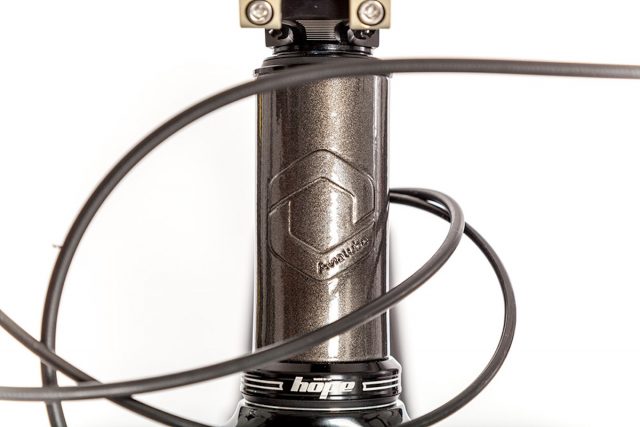
The original Caminade company has since faded away. But in 2013, the Caminade name was restarted by Brice Epailly and Sylvain Renouf, who came together to establish a small, independent bicycle manufacturer based near Perpignan in the South Eastern tip of France. There is no connection with the old brand, except for the name. And unlike the original frames, the modern Caminade bikes have all been made from steel, including that gorgeous One4All full suspension bike. Other models include a gravel bike, a hardtail, and a disc brake road bike.
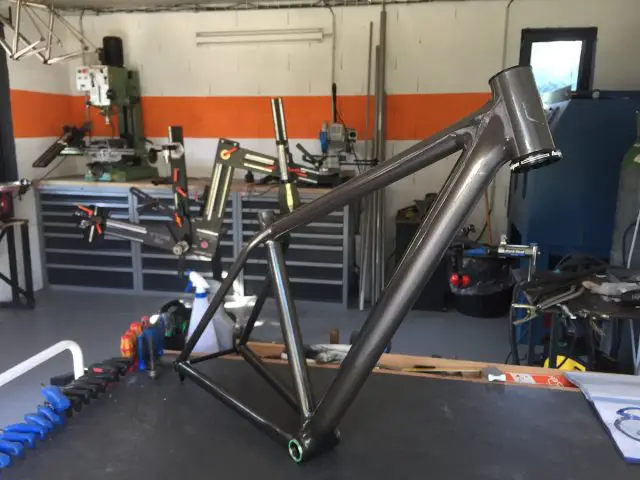
More recently however, Caminade has been showing off a new prototype hardtail frame called the Aviatium, which like its predecessors, is also made from bonded aluminum. This high-tech homage is claimed to weigh just 1200g for the frame, and the prototype is designed around a 100mm travel suspension fork and – rather uniquely – with a 29in front wheel and a 27.5+ rear wheel.
It’s not the first time a bike company has produced a frame made of bonded alloy frames. Remember those ‘lively’ cyclocross bikes in the 70’s from Alan? And bonded alloy road frames from Vitus? Those bikes are long gone, and when it comes to modern frames today, this kind of technique isn’t exactly what you would call mainstream. Hope will be bonding the back end of the new HB160 frame for production, but otherwise we can’t think of too many other manufacturers that are sticking alloy to alloy with glue.
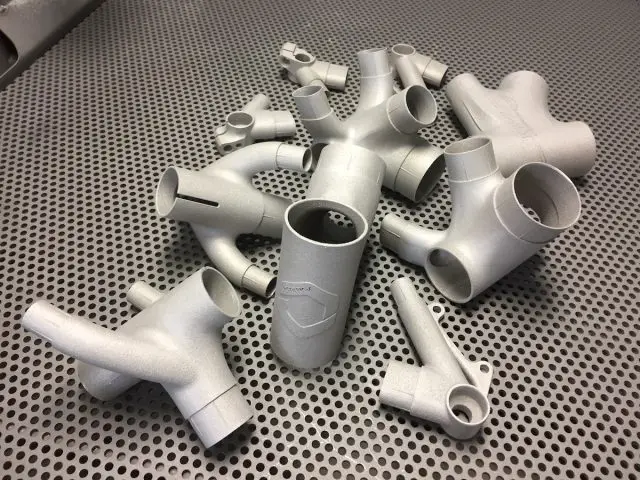
The Aviatium frame features distinct shapes and curves made by possible by the way of 3D printed lugs and custom extruded alloy tubing. To make such a structure, Caminade collaborated with another French manufacturer called Aviatube, which specialises in producing unique tube shapes via a patented extruding process. The 3D printed lugs are also made in France out of Airbus’ patented Scalmalloy powder, and then they’re joined to the tubes and bonded with high-tech glue.
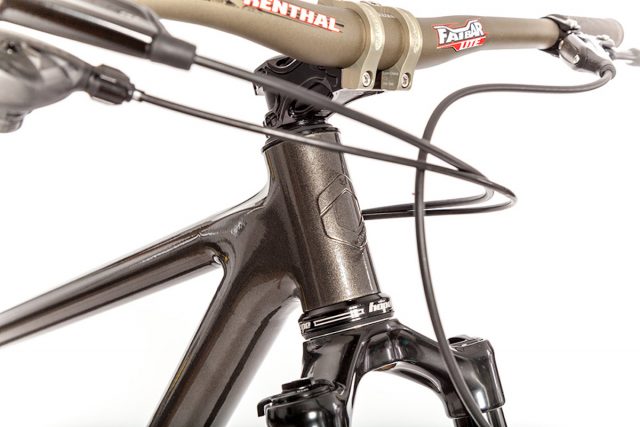
But when most brands would weld an alloy frame together, why do it this way? Using lugs can potentially offer a greater degree of control on frame shapes and geometry, especially if you’re 3D manufacturing the lugs, which is the reason why Robot Bike Co builds its carbon/titanium frames like the R160 we reviewed recently. In this case, the bonding process is also necessary in being able to make use of the special extruded tubes, which cannot be welded.
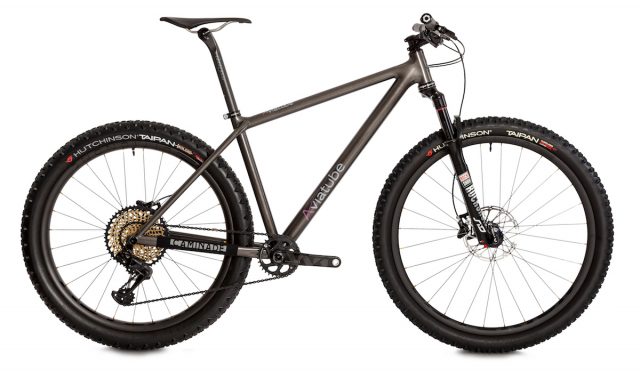
As for the benefits? According to Caminade, the Aviatium is “lighter than one-off made titanium frames, more comfortable, less fragile than carbon, and last but not least recyclable“. Bold claims indeed, and ones we were keen on investigating further. So we dropped a line to Sylvain Renouf at Caminade to find out more about the Aviatium frame, and what’s special about it.
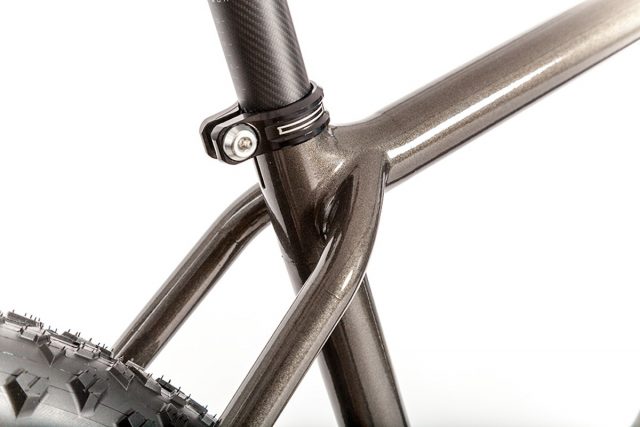
Where is the frame made, and how?
At Caminade, we designed all the frame in-house (including tubes sizes and lugs). Then Aviatube manufactures the tubes. We ask a French supplier to print the 3D lugs, and at the end we made the frame in our Caminade workshop (cutting the tubes, prepared everything on the jig, added the glue and do the paint). Now we are in the field testing part until beginning of winter. It will give us more informations about what to do next.
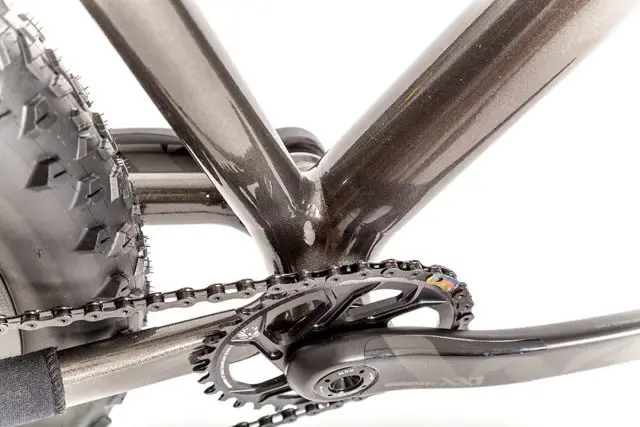
So the Aviatube tubes, how are they different to tubing used on other bikes?
These tubes have mechanical properties much better than low cost alloy using in bike industry. Tubes can be manufactured in a large range of diameters and thicknesses thanks to Aviatube’s unique and patented production process. Their resilience is very high so it gives comfort to the bike frame. They are also very light. Our frame prototype is less than 1,2kg and solid enough to go for (an) all mountain ride. But we are only at the beginning of what we can do.
To be correct, for the bike frame, we used the special Aviatube 7175 T6 grade tubes series, with better specifications as 7000 series. This is why Aviatube calls theses high grade tubes “Aviatium tubes”. With their patent, Aviatube are the only one in the word able to do theses high grade tubes. It gives Aviatube a big technical advantage against Asia manufacturing facilities.
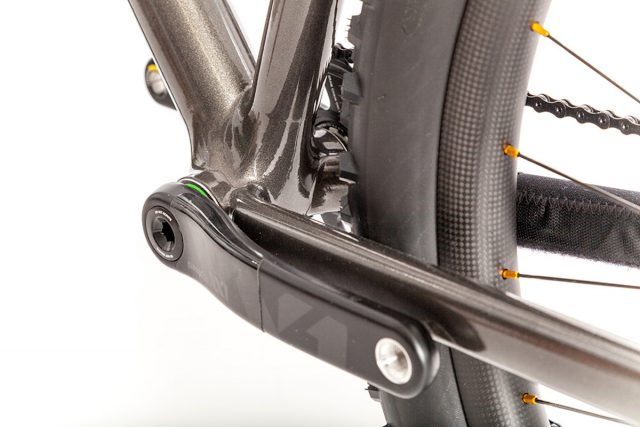
Are the tubes welded or bonded together with the lugs?
These tubes cannot be welded so you have to glue them in lugs. So for prototype we used 3D printing lugs out of Scalmalloy powder (Aluminum, Magnesium and Scandium) which AIRBUS has patented for 3D metallic printing.
What sort of glue do you use for the bonding process?
A bi-component glue coming from aeronautic industry. We made several testing session to find the good one and how to use it.
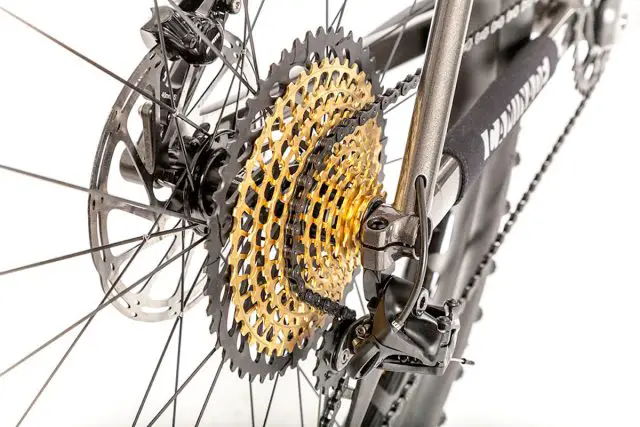
Will there be custom geometry?
We do not know up to now. Beside the custom geometry approach you have also to consider the cost for the frame. Even if it is going to be a very high end frame we have to keep it at a “reasonable budget”. But yes we would like to go for custom geometry proposal.
What will the cost be for the frame?
It is to soon now to answer. but the prototype is very expensive 😉
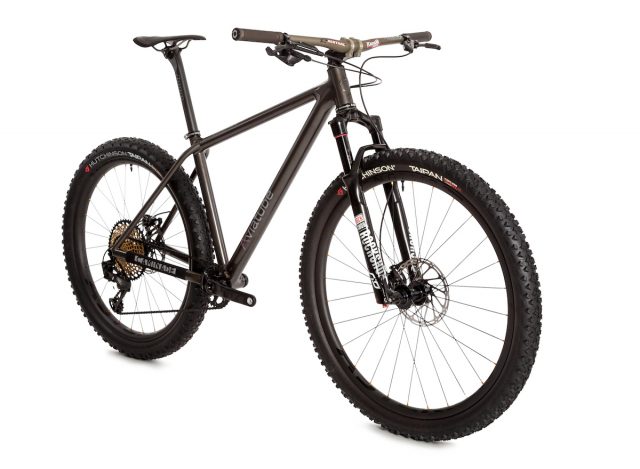
Will you make other frames with the same technique?
We are now focusing on a MTB frame more or less like the prototype. We have still a lot to do like field testing and more prototypes before release a bike for sale. But we are on the good way. Innovation is at the centre of Caminade DNA.
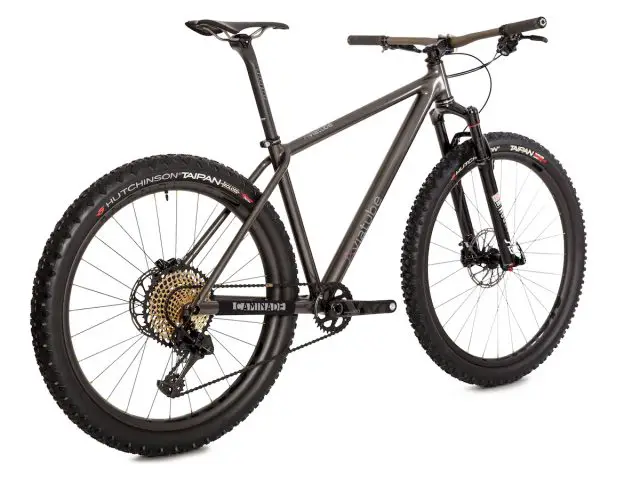
And there you go, something quite different from a small French brand. As to what’s next? Caminade will continue testing its prototype to evaluate geometry, ride quality and durability. According to the photos of the lugs above, there’s more than one frame kicking about, so our guess is that there’s a few different geometries being tested. And given Caminade’s response regarding the weight of the frame, it sounds as though there’s still opportunity to get the weight down.
To prove the Aviatium is an actual, ridgy-didge rideable mountain bike, Caminade sent us through this video of the bike being put through its paces on some local test trails that look rather dry and dusty. There also appears to be no grey skies, which are very intrigued about.
For more information about the brand and its bikes, head to the Caminade website for more.
Comments (7)
Leave Reply
Post Comment
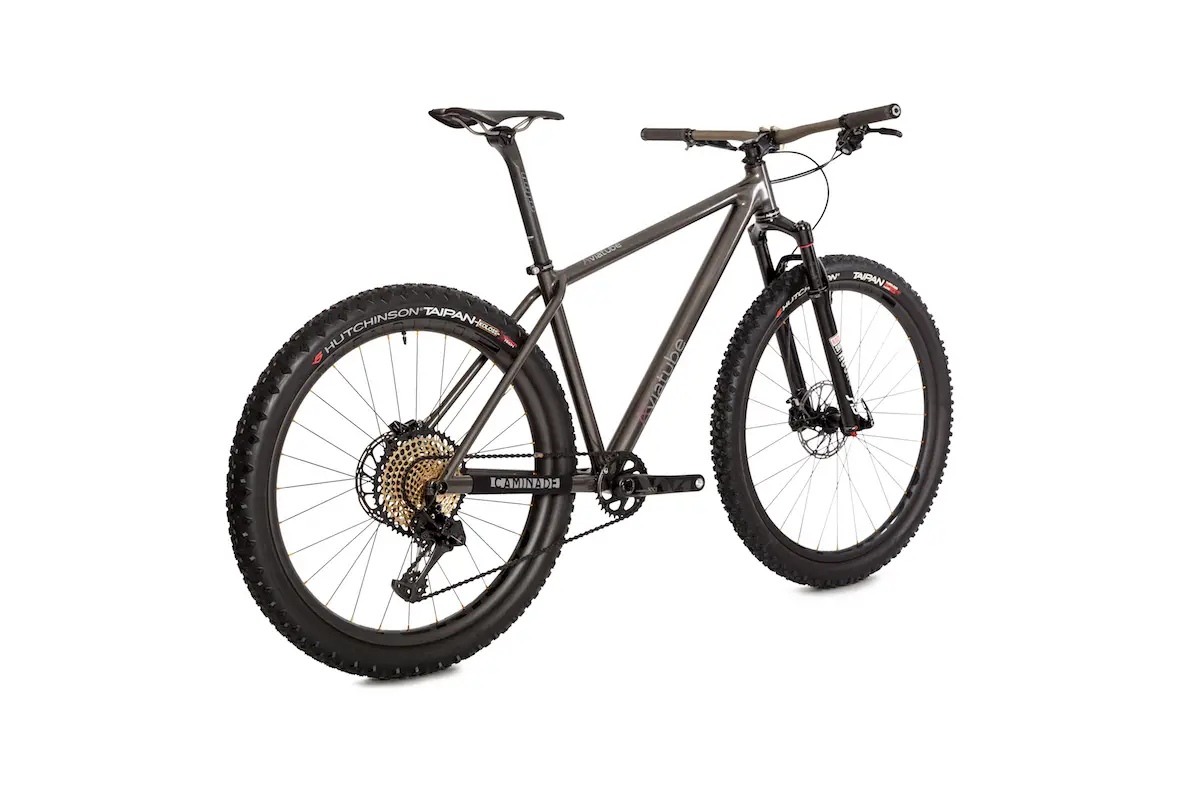

“we can’t think of too many other manufacturers that are sticking alloy to alloy with glue”
Except of course in the automotive sphere Lotus have been doing this with the Elise and derivatives for years.
Watching my mate riding down doctors gate & the headtube separating from the downtube on his Dyna Tech has put be off bonded frames for life.
Look nice though.
Not a significant weight saving. I’m pretty sure my Scandal frame weighs close to that.
Interesting technology though. Maybe the day is coming when we can print out our frame lugs at home and brew our own designs.
Leaving the odd wheel sizes to one side, that is a gorgeous looking frame.
I’d considered doing the same wheel sizes on my old 29er HT but a B+ wheel wouldn’t fit. I reckon it’d solve part of the comfort issue.
Trek bonded Alu to Alu in their US made hardtail frames up until 1996.
They continued to use that approach on their flex stay pivotless rear ends for Sugars and Fuels etc around 2000-2004 or so.
I guess most of their customers are those who wants something special and knows what they want in a frame. But…
Who in the world want’s a pressfit BB???
The mind boggles…